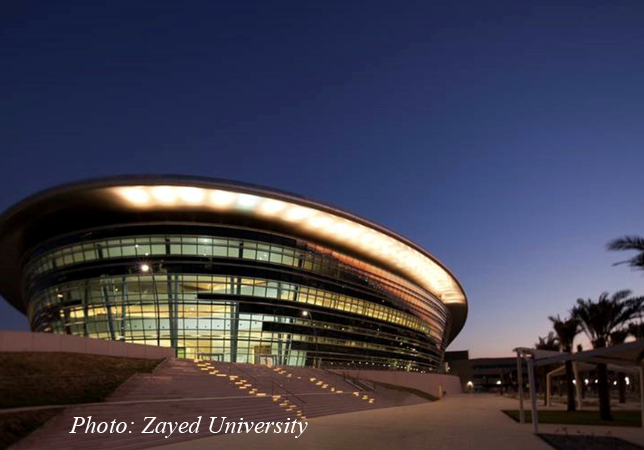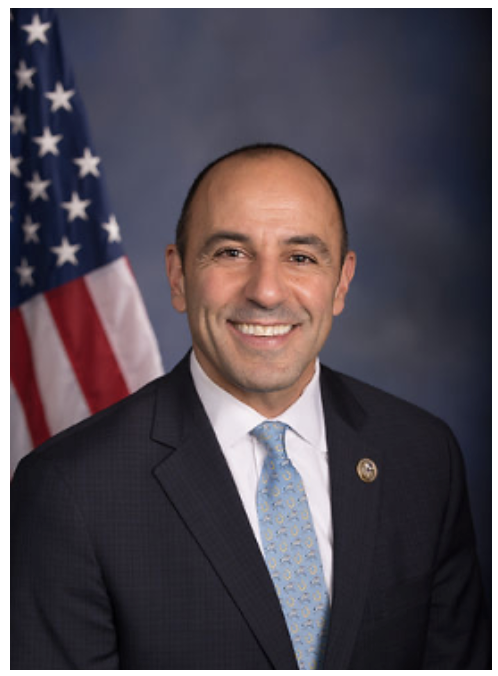January 2023 Inside the Issue

Telling Our Own Tales
Pam Allyn and Ernest Morrell suggest ten ways to help every student harness the power of story
Taking a Stand! Moving Forward: Advocacy for Our Nation’s English Learners and Emergent Bilingual Learners
By Dr. Barbara Flores
A Revised Composing Process
By Stephen Krashen
A New Year’s Wish for Literacy Education in 2023
By Dr. Kenneth Kunz
Centering on the Story: Putting Students First
By Ayanna Cooper
Using Oral History to Share the Truth
Mary Romney-Schaab uses the case of an Afro-Caribbean in the Nazi era to highlight the value of culturally sustaining pedagogy
Designing Learning Ecologies
Heather Rubin, Andrea Honigsfeld, and Lisa Estrada explore strategies for the digital-age language learner
Between Understanding and Using Language
Tiffany White introduces the role of speech–language pathologists in helping students of all ages and backgrounds achieve academic and social success
Identity, Safety, and Belonging for Native American Students
Becki Cohn-Vargas interviews Paula Rabideaux
Budget Compromise Ditches Child Tax Credit, Increases Education Spend

To secure the minimum of ten Republican votes to avoid a filibuster, Democrats were forced to abandon some priorities, including reauthorization of the Child Tax Credit, which was so successful in reducing child poverty (see LM, November 2022, editorial).
Congress did approve fiscal year 2023 increases in line with inflation for Title I programs in high-poverty schools, special education, and community schools. However, Biden had asked Congress to double Title I funding to $36.5 billion and lawmakers only agreed to an $850 million increase, bringing the total spend to $18.4 billion. The US Department of Education’s pre-k–12 allocation of $45 billion includes a 5.6% increase over last year’s spending allocation. The budget earmarks a total of $79.6 billion for the Department of Education—up $3.2 billion from last year, but $8.7 billion less than the president’s request.
The FY 2023 appropriation includes an increase of $59 million for English language acquisition, to a total of $890 million. Special education is being allocated $15.5 billion ($934 million more than last year), including a $20 million increase for teacher preparation and professional development.
Although funding for universally free school meals was not included, funding legislation for the US Department of Agriculture does stipulate $28.5 billion for federal child nutrition programs, which includes $30 million for equipment to help schools prepare meals and $40 million for the summer program to help low-income families purchase groceries during the break.
A notable funding increase is the doubling of the allocation for full-service community schools, to $150 million. Head Start funding is being increased by $960 million, to nearly $12 billion, including a $596 million cost-of-living adjustment for staff. The Child Care and Development Block Grant received an additional $1.85 billion, bringing it to $8 billion, while career, technical, and adult education funding was increased by $100 million to $2.2 billion.
Student support and academic enrichment state grants went up by $100 million to $1.4 billion, and federal funding for the Nita M. Lowey 21st-Century Community Learning Centers rose to $1.3 billion.
The budget also includes a directive for the Education Department to provide guidance for districts and states on using federal funds to recruit, prepare, support, and retain school principals and other leaders.
The legislation was signed by the president on Dec. 29, 2022, but only covers the period to Sept. 30, 2023.
Canada’s Census Prompts Bilingual Education Plans


Last month, Canada’s commissioner of official languages Raymond Théberge reacted to the release of the latest Census data related to official languages by recommending a re-evaluation of bilingual education provisions: “According to the data, one third of eligible children across the country have never attended school in the official language of the linguistic minority. Governments at all levels need to do more to ensure that rights holders can send their children to school in the official language of the linguistic minority.
“The data also shows how important French immersion programs are for English-speaking children across Canada. Although the data on French immersion in Québec was not available, we can still see that 16% of school-aged children outside Québec have been in an immersion program. Being bilingual creates opportunities and can contribute significantly to the use of both official languages in Canadian society. The new Census data shows, for example, that immersion graduates are a major contributing factor in the use of French in the workplace.
“Although Statistics Canada notes that comparing 2021 data with 2016 data should be done with some degree of caution, we can still see a decline in the use of French as the primary language of work in some regions of the country. I encourage policymakers to examine this new data—especially in terms of the possible links between language of instruction and language of work—and to do more to promote the use of French in the workplace.
“Moving forward, the federal government will need to take stock of all of the 2021 Census data relating to official languages and use it to develop its programs and initiatives, including the next Action Plan for Official Languages, which is set to begin in April 2023.
“In order to attain equality of status and use of both our official languages in Canadian society, English and French need to receive the necessary support, and government spending needs to achieve results.”
Arabic Teaching Hub Opens in Abu Dhabi

Zayed University in Abu Dhabi has launched an Arabic education hub to help the Emirates’ drive to encourage wider use of the language. The Zai Centre will explore how Arabic is taught across the globe in order to provide learners with recognized standards of education.
The facility aims to be the world’s first Arabic language education accrediting body by 2026, the government media office said on Twitter, adding that the center was part of “Abu Dhabi’s vision to preserve and develop the Arabic language.”
Noura Al Kaabi, the Emirates’ minister of culture and youth and chair of Zayed University’s board of trustees, said the Emirates had a duty to enhance the teaching of Arabic. “The Arabic language is inextricably linked with our heritage, culture, and homeland,” she said. “We all therefore have a duty to promote, preserve, and enhance the teaching of Arabic.”
According to Al Kaabi, a recent report by the Ministry of Culture and Youth highlighted an “absence of a clear vision for teaching Arabic as a world language.”
“Our ambition is to establish the Zai Centre as a leader in this space and become the first accrediting body for Arabic language education in the world by 2026,” she said.
The Zai Centre will oversee the creation of the Children’s Arabic Corpus, in partnership with the Abu Dhabi Arabic Language Centre, which will identify the most frequently used words in Modern Standard Arabic.
It will also lead the development of a resource library, beginning with translations of the top 100 studies on Arabic teaching published in academic journals, most of which are currently only available in English.
Supporting Arabic has been a priority for leaders of the United Arab Emirates (UAE) in the context of the country’s multiculturalism. The UAE has embraced bilingualism in everyday life, with road signs in English and Arabic, and many government and legal services available in both languages.
In August, Sheikh Abdullah bin Zayed, minister of foreign affairs and international co-operation, called on schools and universities across the country to step up efforts to promote national identity and culture and the Arabic language.
In June, Sheikh Dr. Sultan bin Muhammad Al Qasimi, ruler of Sharjah, the third biggest city in the UAE, urged teachers to promote Arabic in schools.
Sheikh Dr. Sultan stressed the importance of teaching Arabic to pupils, focusing on the need to develop new teaching methods for the language and encouraging youngsters to learn it.
“The Arabic language is a stockpile of our history, our knowledge, and our culture. The Arabic language is what holds firm our belief in our religion. The Arabic language is what unites us from the farthest corners of the Earth—from the far East to the far West, we are united under one language,” he said in an address to teaching staff at the Sharjah Education Academy.
In 2020, Abu Dhabi set out a five-year plan to encourage greater use of Arabic. It included using Arabic content, developing digital platforms in the language, and encouraging research to promote it at all levels.
UNESCO Commits to Inclusive Multilingual Education


“Language is a tool, but the goal is not simply to exchange one language for another but to have an educational and social project,” explained Adama Ouane of the UNESCO Institute of Lifelong Learning (UIL) during the recent Transforming Education Summit. In a world with 7,097 known languages where 2.3 billion people lack access to education in their own language, making education inclusive is a challenge.
The challenge becomes bigger in a multilingual country, where learners’ mother tongues are different from the language of instruction. Due to this lack of diversity in languages of instruction, many learners are disadvantaged in mainstream education systems.
“Multilingual education must be anti-racist and anti-discriminatory,” argues Tarcila Rivera Zea, Quechua activist and member of the United Nations Permanent Forum on Indigenous Issues. “One of the many reasons why parents and grandparents from Indigenous and minority societies do not pass on languages to new generations is because of the persistence of racism, discrimination, Eurocentrism, and the coloniality of power, knowledge, and speech.”
A multilingual education is a challenge that requires solutions relevant to learners’ needs and the realities of their lives. UNESCO has committed to encouraging and promoting multilingual education based on mother tongue or first language. This approach enables learners whose mother tongue is different from the language of instruction to bridge the gap between home and school, to discover the school environment in a familiar language and thus learn better.
UNESCO convened language experts, including Indigenous language experts, to advance multilingual education based on mother tongues, multilingualism, and linguistic diversity. Discussions explored the challenges and opportunities surrounding multilingual education, its fundamental role in the development agenda, and UNESCO’s guidance on multilingual education.
Today, more than half of all languages are in danger of falling into disuse. When a language disappears, the knowledge and sociocultural diversity of the language community disappear with it, particularly among Indigenous communities. To address this, an updated position paper by UNESCO will integrate additional areas of work such as the recovering of languages or language revitalization.
Aligning with recommendations made during the summit, an emphasis was also placed on Indigenous people’s education and languages. In his vision statement “Transforming Education” (www.un.org/en/transforming-education-summit/sg-vision-statement), the United Nations secretary-general calls for equitable investments in education, to reach those who have been traditionally excluded from quality education, including Indigenous people. Similarly, a discussion paper on inclusive, equitable, safe, and healthy schools calls for textbooks and curricula to be inclusive of all groups and for teacher training curricula to better address inclusive education principles.
An updated UNESCO position paper “Education in a Multilingual World” (https://unesdoc.unesco.org/notice?id=p%3A%3Ausmarcdef_0000129728_chi&posInSet=1&queryId=8ece9c42-615e-4e2d-8e98-6b522c586e07) will be published in early 2023 to support countries in the implementation of multilingual education and respond to the needs of marginalized and excluded learners, including Indigenous peoples.
To further support the work on multilingual education, UNESCO will publish a language and inclusion policy brief as well as a background document on early childhood care and education and languages, prepared for the UNESCO World Conference on Early Childhood Care and Education in November.
UNESCO will also celebrate International Mother Language Day 2023 around promising policies and practices on multilingual education focusing on Indigenous and other languages.
French-Speaking World Connects in Tunisia

The 18th Summit of La Francophonie, held in Djerba, Tunisia, last month, attracted national leaders from an array of French-speaking countries who worked together to define new decade-long guidelines to ensure a broader influence of the French language worldwide. The Sommet de la Francophonie is organized by the OIF (International Organization of La Francophonie) every two years and should have been held in 2020 to celebrate the 50th anniversary of La Francophonie. Due to the pandemic, it was delayed to 2022, when it was held on Djerba island, which is described as “a place of peaceful cohabitation between religions and civilizations for over 3,000 years.”
According to the OIF, over the last 50 years, “Francophonie has experienced considerable progress, which should be consolidated and built upon,” so the main objective of the Djerba Summit was to turn the organization before 2030 into “a space for solidarity that is better governed, more inclusive, digital, innovative, sustainable, and prosperous for its people, and especially for women and young people.”
To reach this objective, the OIF defines five common objectives:
- Strengthen the influence of French speakers worldwide, through an intensification of its diplomacy of influence and an increase in exchanges between French-speaking economic organizations;
- Strengthen the use of the French language worldwide, by encouraging the practice of French in education, in economic and cultural exchanges, in sciences, and in the digital arena;
- Promote cultural and linguistic diversity worldwide, by highlighting “the diversity and dialogue of cultures in favor of inclusive and sustainable development”;
- Turn the Francophonie into a space for peace and stability through the prevention and management of conflicts and supervision of transitions, but also by working for “the consolidation of democracy and protection of human rights”;
- Turn the Francophonie into a laboratory for strategic and innovative cooperation by putting in place new projects that contribute to “a sound and sustainable environment,” and particularly to fight climate change by supporting the acceleration of digital transformation.
The Place of France in the Francophonie
The summit gave French president Emmanuel Macron an opportunity to suggest new joint initiatives to promote “the objectives for the French language and multilingualism” backed by France:
- Learning, by supporting the education systems of French-speaking countries and by strengthening the place of the French language in countries where it is learned as a foreign language;
- Communicating, by confirming the place of the French language on the internet and promoting multilingualism in the French-speaking media;
- Creating, by supporting artistic creation in the French-speaking world, building cultural connections between French-speaking countries, and increasing the mobility of talent.
Macron said that progress on this action plan will be assessed during the next summit, to be held in France in 2024.
Canadian prime minister Justin Trudeau reaffirmed Canada’s commitment to remaining a strong partner for fellow Francophonie members and governments and continuing to support La Francophonie’s institutions, announcing:
- $20.8 million for the OIF to continue implementing its mandate and programming in key areas, including inclusive governance and growth, the promotion of the French language, democracy and human rights, education, and economic cooperation for sustainable development;
- $2.4 million for the Agence universitaire de la Francophonie to continue promoting cooperation between Francophone academic institutions, improve access to quality education for learners in the global south, and support professional training and research; and
- $200,000 to enable TV5MONDEplus to continue supporting, promoting, and disseminating French-language programming, including content produced in the global south.
To promote sustainable development while continuing to advance peace, security, and democracy in the French-speaking world, the prime minister announced that Canada is providing:
- Approximately $65 million to support sustainable development projects in the Sahel, particularly in Mali and Burkina Faso, with a focus on support to vulnerable populations, the empowerment of women and girls, good governance and democratic resilience, and socio-economic development;
- $49.5 million to support the ACTION project, which aims to improve economic, food, and nutritional security for Mali’s poor rural populations practicing proximity irrigation, especially women and youth; and
- $1.5 million to support the ongoing mission and operations of the Académie internationale de lutte contre le terrorisme, which supports African countries, including Francophone West Africa, in their counterterrorism efforts.
Francophonie: Key Figures
- The OIF brings together 88 member states and governments. It represents 1 billion people, including 300 million Francophones, on five continents;
- In 2022, the French language was used regularly in 112 countries and territories;
- There are 321 million French speakers worldwide;
- Over the last four years, 21 million additional people spoke French, a 7% increase since 2018;
- 255 million people use French daily;
- In total, 1.2 billion people speak French;
- French is spoken on five continents and is the fifth language worldwide;
- In Djerba, OIF member states and governments adopted key documents;
- At the summit, Canada promoted the value of studying in Canada and the Canadian International Development Scholarship 2030 program;
- Canada is the second-largest donor to the Francophonie’s institutions, with contributions totaling nearly $40 million in 2021–22.
Keying In K–12 Equity


This is the fourth school year educators, students, families, and administrators will be impacted by the coronavirus pandemic. While recent data from NWEA shows early signs of rebounding,1 which offers some hope, the research also shares some jarring insight—it may be at least three to five years until students fully recover from the pandemic.
During the height of the pandemic, schools were shut down and parents had to be more hands-on in their children’s schooling. More than ever, teachers and parents had to depend on collaborative relationships with each other for the sake of their students’ learning and overall well-being. Because of that, parent–teacher communication, which has been proven to be beneficial for student success, skyrocketed. Monthly interactions became weekly or daily phone calls, text messages, and video chats. In addition to leaning more on each other, parents and teachers also relied on technology tools for communication and to track students’ progress during those unprecedented times.
As the new school year gets underway, we will continue to see the many ways that parent–teacher communication and technology will heavily impact student learning and success, including the following:
New Technologies Will Support Equity in K–12 Parent Communication
Equity is critical to a student’s academic success, particularly for students who have been historically marginalized. But to create more equitable opportunities for students in K–12 classrooms, equity efforts need to extend to families as well.
Equity in K–12 parent communication is about reaching out in ways that are direct and convenient to parents. It’s about meeting parents where they are. In the 2022–23 school year, we will see growing demand for K–12 technologies and platforms that support more equitable parent communication and collaboration. Platforms that fuse data and communications and offer multiple modes of communication and translation capabilities can help enable expanded educator understanding of student home life. Using these platforms can also result in increased parent engagement and shared parent understanding of curriculum and course goals.
In the coming year, this will be an important area of focus for districts as we continue to address the fallout from COVID’s disproportionate impact on historically marginalized students.
Schools Will Leverage Data to Address COVID’s Impact on English Learners
It is no secret that historically underserved students were disproportionately impacted by the pandemic. More specifically, English learners (ELs) severely suffered, as many of their educational needs were not being met during the COVID-19 school closings.
On top of COVID-19 learning disruptions, students have been continuously impacted by the “summer slide,” which is a drop in learning levels that occurs during summer break. Students tend to forget information during the summer due to being out of the classroom for months at a time. While this “loss” in learning isn’t typically enough to alarm educators, this paired with COVID-19 learning interruptions is alarming. Research found that ELs tended to lose more ground over the summer than their non-EL peers or their multilingual peers who were ELs at some point but not consistently through K–4.2
Using data dashboard tools to help educators visualize student data has become paramount in assessing the learning impact of COVID and implementing remediation resources. It will be critical that we address the specific needs of this group of learners using both data and communication technology tools that offer translation for one-to-one parent engagement and communication to help support ELs.
As we move forward, technology will be a vital part of districts’ efforts to support equity and address learning gaps that have widened due to pandemic disruptions. By investing in technology that supports equitable school–home communication and the meaningful use of data and that provides a holistic picture of students’ progress, districts can help to address inequities in schools that were made worse by the pandemic. This type of technology can provide support for families, students, and educators, which will be the key to making gains in learning.
Links
www.nwea.org/research/publication/student-achievement-in-2021-22-cause-for-hope-and-continued-urgency
www.nwea.org/research/publication/achievement-and-growth-for-english-learners-2
Leslie Ortego is the director of customer success at SchoolStatus (www.schoolstatus.com).
Congressman Panetta Becomes America’s Languages Caucus Co-Chair

The Joint National Committee for Languages has announced Representative Jimmy Panetta (D-California 20) as the new House co-chair of the America’s Languages Caucus.
The America’s Languages Caucus was established in 2019 by Representative Price (D-North Carolina 4) and Representative Young (R-Alaska) as a bipartisan effort to support and enhance foreign language competence and international education among students and professionals across the US. Congressman Panetta has been a member of the caucus since its inaugural year and is a longstanding supporter of language education. His work to bolster funding and access to language education includes co-sponsoring the World Language Readiness and Advancement Act, which was enacted in 2019, and sponsoring the Defense Language Improvement Act, which was enacted in 2021. “It’s an honor to take over as a co-chair of the America’s Languages Caucus in the US Congress. I hope to build upon the solid foundation that was laid by the caucus’s founders, Rep. Price and the late Rep. Don Young,” said Representative Panetta. “Language skills are more and more critical these days to compete in our interconnected world. That’s why I look forward to working with my colleagues in Congress as well as the Joint National Committee for Languages and National Council for Languages and International Studies so that together we can support and expand language programs to empower the next generation of multilingual leaders in the United States.”
“On behalf of the Board of Directors and our entire nationwide team of advocates, I want to express how thrilled we are to have Congressman Panetta stepping into this leadership role to move language education forward,” said Amanda Seewald, JNCL-NCLIS president. “Representative Panetta understands the need to have a multilingual citizenry prepared to address global issues and to grow equitable language learning opportunities for all learners. Both of these are the central goals of JNCL-NCLIS. With deep gratitude to Congressman Price and Congressman Young, JNCL-NCLIS is ready to take the next important steps to ensure that language education in the US grows to meet the needs of our world.”
The now bipartisan, bicameral caucus is made up of 32 members of Congress. The Senate arm is co-chaired by Senators Brian Schatz (D-Hawaii) and Shelley Moore Capito (R-West Virginia). The caucus’s Republican co-chair joining Congressman Panetta following Congressman Price’s retirement will be announced in the coming weeks.
Spanish Controversies in the US


Political Misinformation
During last month’s midterm elections, misinformation and conspiracy theories were circulating among Spanish-speaking communities, especially in South Florida, raising fears that they could discourage some Latinos from voting.
The most widely spread false narrative was about alleged rampant fraud in the 2020 presidential election, according to Tamoa Calzadilla, managing editor of the Spanish-language fact-checking website Factchequeado.com. Misinformation is often similar in English and Spanish, Calzadilla said, but her team identified specific subjects particularly targeted at the Latino population, including falsehoods that the Biden administration is a socialist, communist regime, which Calzadilla noted is sensitive for people who came from Cuba, Venezuela, and Nicaragua because of those countries’ histories. The spread of misinformation and disinformation in Spanish, some of it coming directly from politicians and partisan media outlets, has plagued social media platforms for years and has helped to sow doubt about the integrity of elections in the US.
“It’s something that is fracturing our democratic institutions. It’s affecting our families. It’s dividing our families,” Evelyn Pérez-Verdía, a Democrat and chief strategy officer for We Are Más, a consulting firm focused on intercultural communications and countering disinformation, told CNN.
Particularly vulnerable are messages on WhatsApp (now owned by Meta/Facebook), as they are encrypted, so they cannot be moderated.
There have been lies about election fraud, socialism, and communism and distortions about people running for office, Pérez-Verdía said, adding that she also witnessed the spread of misinformation in WhatsApp groups.
On Telegram, there are QAnon channels dedicated to translating conspiracy theories into Spanish that have tens of thousands of followers.
The misinformation posted in these channels is very “sophisticated” with a focus on specific accents and subcultures, Pérez-Verdía said.
Over the past year, election officials have raised to the Department of Homeland Security’s Cybersecurity and Infrastructure Security Agency (CISA) the need to help non-English-speaking communities address the risks of disinformation, according to CISA’s senior election security adviser Kim Wyman.
CISA recently released “Tactics of Disinformation” (www.cisa.gov/sites/default/files/publications/tactics-of-disinformation_spanish_508.pdf), an online pamphlet in both Spanish and English. The Spanish Language Disinformation Coalition, a group of civil rights, Latino leadership, and consumer advocacy organizations, urged several social media companies including Facebook, YouTube, and Twitter to take steps ahead of the 2022 midterms to do more to combat hate and disinformation on their platforms.
“Unless election disinformation is tackled, our community will once again be at risk of those seeking to silence and harm us,” the letter says. Representative Joaquin Castro (D-Texas) said as the Spanish-speaking share of the electorate grows, the “unchecked spread” of Spanish-language misinformation and disinformation on social media “threatens our community’s ability to participate in democracy,” in an October press call with the coalition.
And Twitter…
US Senator Ben Ray Luján (D-New Mexico) joined a handful of senators calling for Elon Musk to address concerns that Spanish-language Twitter users might be targets of disinformation on the platform. The letter gave Musk until December 6 to respond.
The concerns stem from news that Twitter seems to have fired contractors working on content moderation across the platform. On top of that, there seems to have been a spike in racist and harassing tweets on the platform. Now, some senators are calling for more protections for vulnerable users, including Spanish-language Twitter users.
“Disinformation, harassment, and fraud in Spanish was already a prominent issue that wasn’t properly or consistently addressed before Musk took over as CEO of Twitter. Now, amid the abrupt firing of thousands of critical workers, the dangerous lies have only increased,” Senator Luján said in a press release. “Twitter must act urgently to protect all of its users regardless of the language they speak at home or use online.”
Right-Wing Radio Fears
Fox News and other right-wing news outlets have expressed concern that the Federal Communications Commission (FCC) has cleared Latino Media Network’s purchase of several Spanish-language radio stations across the country, claiming that a “radical political agenda” will influence information provided to Hispanic voters.
Miami’s iconic Spanish-language conservative talk radio station Radio Mambi is one of the 18 stations that Latino Media Network will purchase from TelevisaUnivision, for a reported $60 million. Radio Mambi is linked to the Cuban exile community and offers an anti-communism view.
Celebrity Gatekeeping
Popular Latinx actor Jenna Ortega was widely criticized after a video of her trying to speak Spanish during an interview went viral and hit over 10 million views on TikTok. In the video, Ortega struggles to invite people to watch Netflix’s Wednesday in Spanish, which led to some fans arguing that Ortega shouldn’t even be considered Latina if she can’t speak Spanish.
Comments got so out of hand that they were turned off on the viral video. Many claimed Ortega wasn’t Latina because she wasn’t fluent in Spanish, ignoring that Ortega explained that she experienced the very same thing that so many Latinos have gone through with parents wanting to push Spanish to the backburner to mistakenly help children assimilate.


